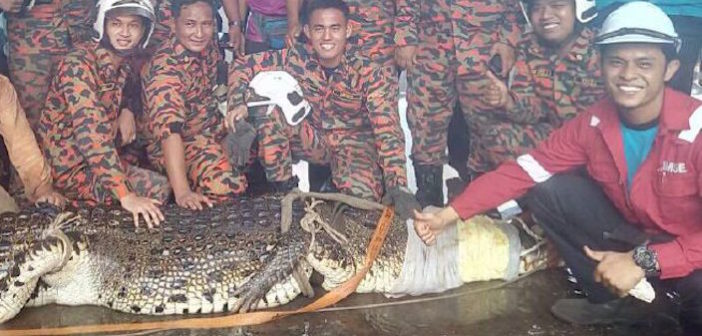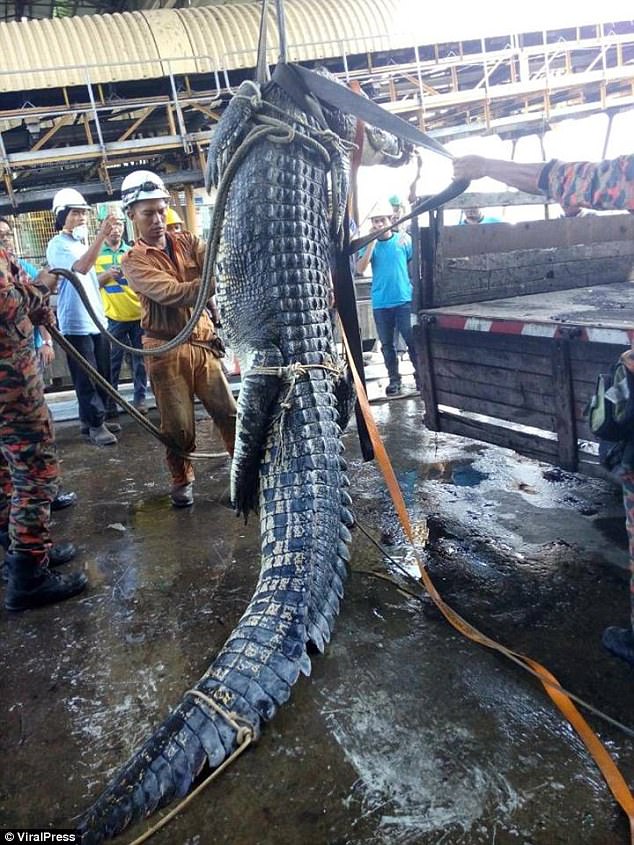Some weeks ago, we learnt of the tragic death of a 6 meter crocodile after being rescued from a dam in Klang, Malaysia. To be able to live and grow up to that size is no mean feat, having escaped from its predator – man – all this while in a country that has traditionally held a great mistrust of crocodiles.
While it was the good intention of the Fire and Rescue Department officers to free the reptile from its fate, its death brings to mind a very important unanswered question: Are our rescue teams well equipped to deal with the capture of massive wildlife?
Friends of the Earth Malaysia (FOEM) fears not. We call for serious attention to the number of massive reptiles caught by Fire and Rescue personnel and the Civil Defence Corp in the past, whose techniques also resulted in the death of a gargantuan python three days after capture.
From the pictures seen, FOEM is horrified at the manner in which the crocodile was hauled up, treated more like a piece of huge log rather than a living, breathing creature. Professional wildlife experts claim that pulling up the crocodile in this manner may have caused suffocation if the pressure was too strong, and broken the reptile’s limbs if too much force was used. On the other hand, using overly soft restraints can make the animal think it has a chance of escaping, therefore causing it to struggle and potentially injure itself more.
Crocodiles, particularly large crocs, are often severely stressed during and after capture, and are easily killed or injured by inappropriate handling. Stress can lead to “capture myopathy” – shock from being caught, poked and prodded.
The taking, handling and transporting of crocodiles requires special expertise and training in large animal rescue. Malaysia’s rescue teams seem to have no understanding of proper wildlife capture techniques. Picture taking with captive wild animals seems to be their priority, rather than ensuring the welfare of wild caught animals, which often requires considerations different from those applicable to captive-bred or domesticated species.
FOEM’s understanding is that there is a set of Standard Operating Procedures (SOP) for the Fire and Rescue department and the Civil Defence Corp for the handling of reptiles, but is there a similar approach for amphibious species such as a one-ton croc? Are personnel from these two departments equipped with the necessary knowledge and experience in crocodile capture and handling techniques to minimise the potential impacts of capture, as well as thorough knowledge of each species caught (behaviour, reaction to stress, ability to defend itself, etc.)?
It is time the Ministry of Natural Resources and Environment and the Wildlife department take into account that capture of wild crocodiles, reptiles and other wildlife species should only be conducted by those with skills and training in capture and handling techniques, and not those without the necessary expertise and skills.
FOEM hopes that the necropsy report for the 6 meter crocodile will be made public, so as to ascertain the actual cause of death and if anything could have been done to prevent it.
S M Mohd Idris
President
Sahabat Alam Malaysia (SAM)/Friends of the Earth Malaysia (FOEM)
258 Jalan Air Itam
10460 Penang
Tel: 04-2286930 Fax: 04-2286932
Featured image credit: Fire and Rescue Department of Malaysia, via Daily Mail UK. Fair use.






